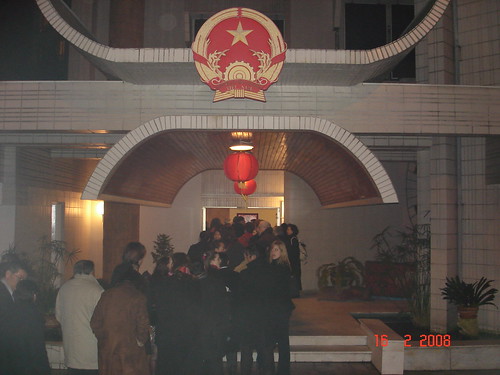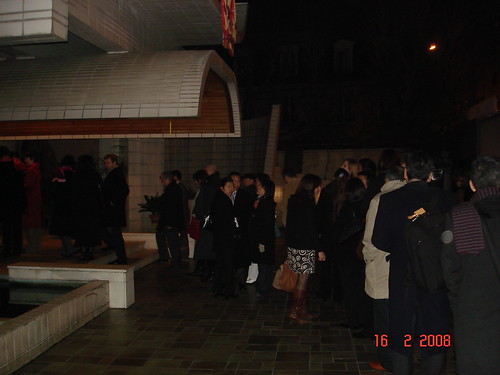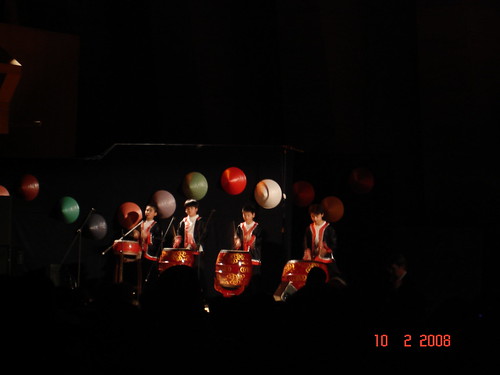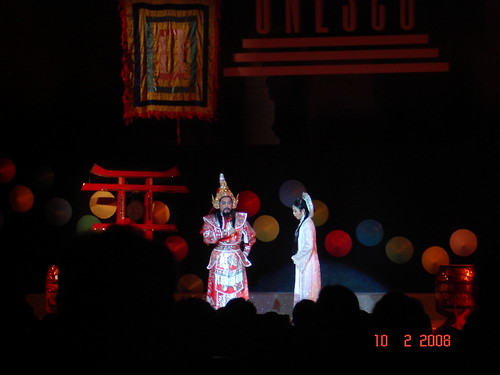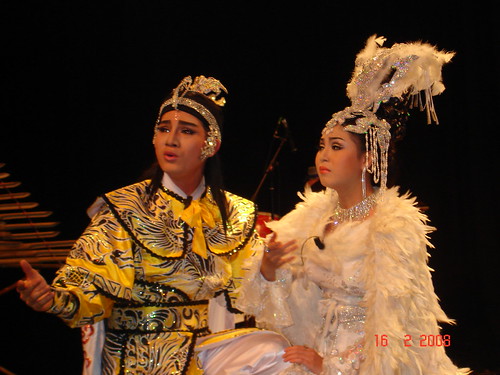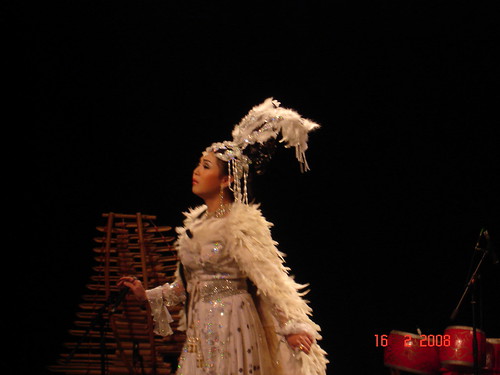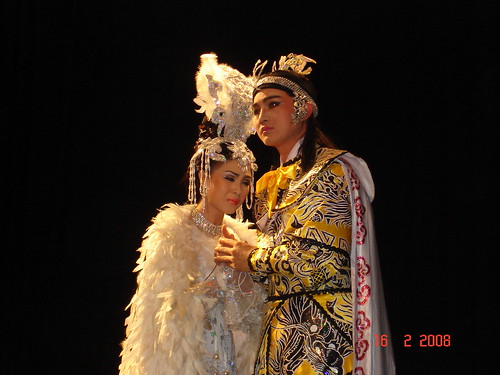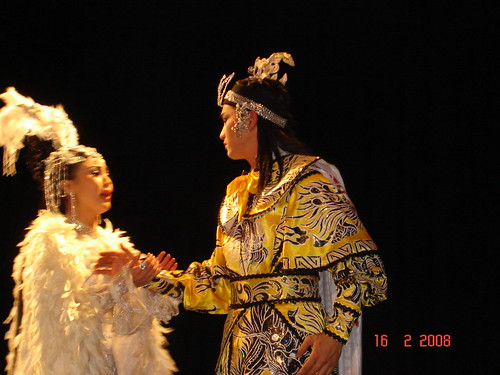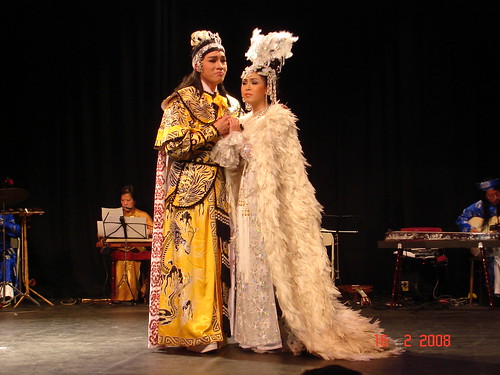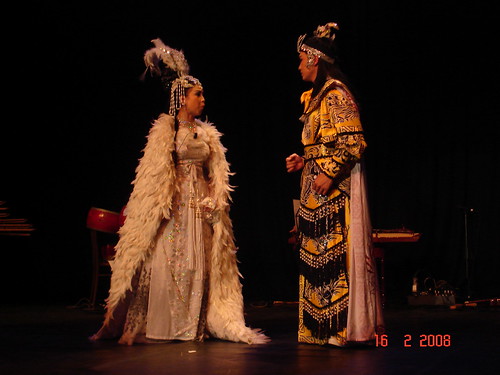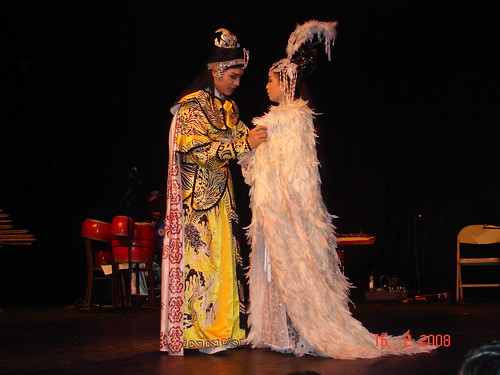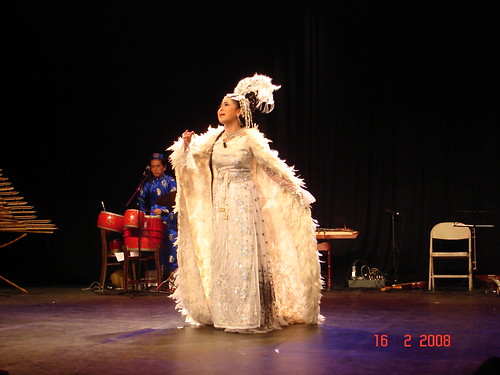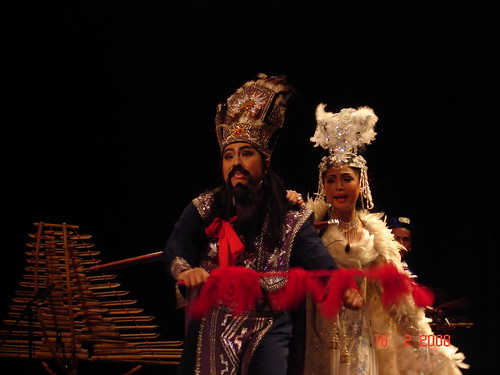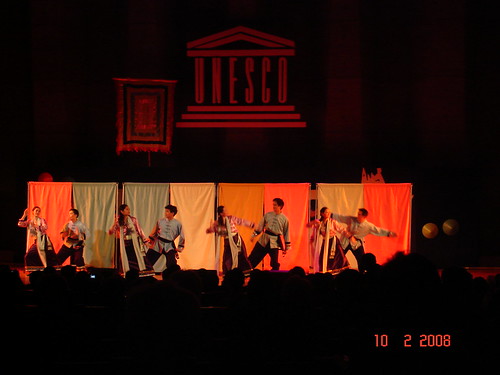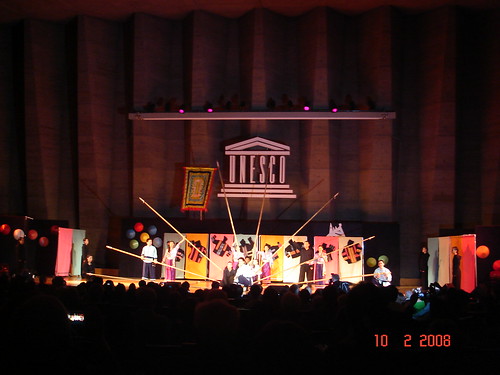
Hát cùng trời nước Hạ Long- Sáng tác: Tân Huyền
Với tiếng hát của NSƯT Tiến Thành (tháng 3/1982)
Theo Công ước Quốc tế 1972 mà Việt Nam là một trong những quốc gia thành viên, để một địa danh hay tài sản trở thành một Di sản Văn hóa thế giới (World Cultural Heritage) hoặc Di sản thiên nhiên thế giới (World Natural Heritage) hay Di sản hỗn hợp (mixed site hay Cultural Landscape) thì phải trải qua một quá trình hết sức công phu, tỉ mỉ và khó khăn, bao gồm các bước:
Bước 1 là di sản đó phải là Di sản quốc gia và năm trong Danh sách dự kiến (Tentative List) nộp trước cho UNESCO;
Bước 2 là lập hồ sơ khoa học đề cử với sự trợ giúp của các chuyên gia trên khắp thế giới;
Bước 3 là việc thẩm định hồ sơ do một cơ quan tư vấn độc lập (độc lập với cả quốc gia và độc lập với cả UNESCO)- đó là ICOMOS đối với các hồ sơ văn hóa & IUCN đối với các hồ sơ thiên nhiên. Sau khi thẩm định, cơ quan tư vấn này sẽ đưa ra khuyến nghị, nhận xét về việc đáp ứng các tiêu chí mà Công ước quy định của khu di sản. Khuyến nghị của ICOMOS và IUCN có giá trị vô cùng to lớn.
Bước 4 là việc phản biện và bảo vệ Hồ sơ đề cử đã được ICOMOS và IUCN thẩm định trước Ủy ban Di sản Thế giới . Nếu được bảo vệ thành công, hồ sơ sẽ được Ủy ban di sản Thế giới thông qua và di sản đó trở thành Di sản thế giới.
Chú ý :
Ủy ban Di sản Thế giới căn cứ vào khuyến nghị của ICOMOS và IUCN, đồng thời căn cứ vào hệ thống các tiêu chí quy định trong Công ước 1972 và các văn bản hướng dẫn thực hành để thông qua Nghị quyết công nhận Di sản Thế giới.
Có 5 tiêu chí áp dụng cho các di sản văn hóa ; 4 tiêu chí áp dụng cho các di sản thiên nhiên. Có hai loại điều kiện là Điều kiện CẦN và Điều kiện ĐỦ để các di sản được công nhận. Chỉ cần đáp ứng 1 trong 4 tiêu chí (đối với thiên nhiên) hay 1 trong 5 tiêu chí (đối với văn hóa) là Di sản đã đáp ứng được điều kiện CẦN.
Tuy nhiên để đáp ứng điều kiện ĐỦ thì đối với các Di sản Thiên nhiên phải đáp ứng được tính toàn vẹn (Integrigty), tức là không bị xâm hại, không bị cắt xén và các Di sản Văn hóa thì phải đáp ứng được tính Chân thực (Authenticity), tức là nguyên gốc, không phải là đồ dởm, tân trang. Trong điều kiện ĐỦ này còn có một phần quan trọng nữa là Quốc gia đề cử phải trình bày thuyết phục trước Ủy ban Di sản Thế giới một Kế hoạch tổng thể nhằm Bảo tồn và Phát huy bền vững các giá trị Di sản.
Chúng ta có Quần thể Di tích Cố đô Huế (văn hóa), Vịnh Hạ Long (thiên nhiên), Đô thị cổ Hội An (văn hóa), Khu di tích Mỹ Sơn (văn hóa), và Vườn Quốc gia Phong Nha- Kẻ Bàng (thiên nhiên) là Di sản Thế giới một cách không đơn giản chút nào. Thời gian chuẩn bị hồ sơ kéo dài cả chục năm. Phải nhờ rất nhiều đến tài năng và tâm huyết của các chuyên gia và các nhà ngoại giao thì mới có được những gì chúng ta đang có.
Trong hai di sản thiên nhiên của chúng ta thì Hạ Long mới chỉ đáp ứng được 2 trên tổng số 4 tiêu chí, đó là tiêu chí về cảnh quan (được công nhận ngay từ lần đầu, chứng tỏ Hạ Long rất đẹp, Thế giới đã công nhận rồi) và tiêu chí về địa chất địa mạo (phải lần làm hồ sơ thứ 2, Hạ Long mới được công nhận theo tiêu chí này). Còn vườn Quốc gia Phong Nha Kẻ Bàng chỉ mới được công nhận theo tiêu chí địa chất địa mạo liên quan đến lịch sử hình thành trái đất, chứ chưa được công nhận về vẻ đẹp cảnh quan . Và nếu không có các nhà ngoại giao của Việt Nam thì con đường tới Di sản có lẽ còn dài và khó khăn hơn rất nhiều.
Trên thế giới hiện nay có tới 851di sản thiên nhiên và văn hóa thế giới đã được UNESCO công nhận. Trong đó CÓ NHỮNG DI SẢN ĐÁP ỨNG CÙNG LÚC TẤT CẢ CÁC TIÊU CHÍ. Nhưng không vì thế mà UNESCO phân biệt thức bậc hay lập các Top List. Cho nên không có 5 hay 7 hay 10 Di sản hàng đầu thế giới hay hạng bét của Thế giới.
Thế nhưng lại có những di sản bị đưa vào Danh mục các Di sản trong tình trạng nguy hiểm (List of World Heritage in Danger) và có nguy cơ bị đưa ra khỏi Danh mục Di sản Thế giới. Chuyện đó hoàn toàn dễ hiểu vì việc một di sản đáp ứng được 1 tiêu chí không có nghĩa là nó sẽ đáp ứng vĩnh viễn tiêu chí đó. Nhất là tính toàn vẹn và tính chân thực, một khi quốc gia không có kế hoạch phát huy đi kèm với bảo tồn thỏa đáng. Ngoài ra lý do thiên tai, địch họa cũng khiến một Di sản bị mất vị trí của mình. Việc này được UNESCO theo dõi sát sao và thường xuyên chất vấn các chính phủ cũng như trợ giúp họ cải thiện tình hình. Huế của chúng ta đã từng năm trong Danh sách nguy hiểm do lũ lụt. Phong Nha Kẻ Bàng vẫn thường xuyên phải báo cáo về cải thiện môi trường.
Vịnh Hạ Long vẫn còn tiềm năng để UNESCO công nhận về giá trị Đa dạng sinh học, cũng như những tiềm năng giá trị về lịch sử, văn hóa để UNESCO có thể công nhận dây là một Di sản Thế giới hỗn hợp- một Cultural Landscape của Thế giới (hiện thế giới chưa có nhiều loại di sản này). Tuy nhiên, UNESCO cũng vẫn lưu ý chúng ta về nguy cơ Hạ Long bị đe dọa bởi ô nhiễm môi trường do phát triển đô thị, công nghiệp, du lịch chưa được quản lý thật tốt dẫn tới nguy cơ phá vỡ cảnh quan và giá trị toàn vẹn của khu Di sản vô giá này.
Tôn vinh, khai thác các giá trị Di sản đi kèm với việc bảo tồn bền vững cho các thế hệ tương lai luôn là vếc-tơ hiệu quả nhất. Đây là một quá trình khoa học, bền bỉ, có chiến lược, có chương trình hành động cụ thể, có sự quản lý thống nhất của các cấp chính quyền cũng như dựa vào sự tham gia của toàn thể cộng đồng. Vì thế công việc này hoàn toàn không đơn thuần là vấn đề tình cảm nhất thời, mang tính phong trào...



